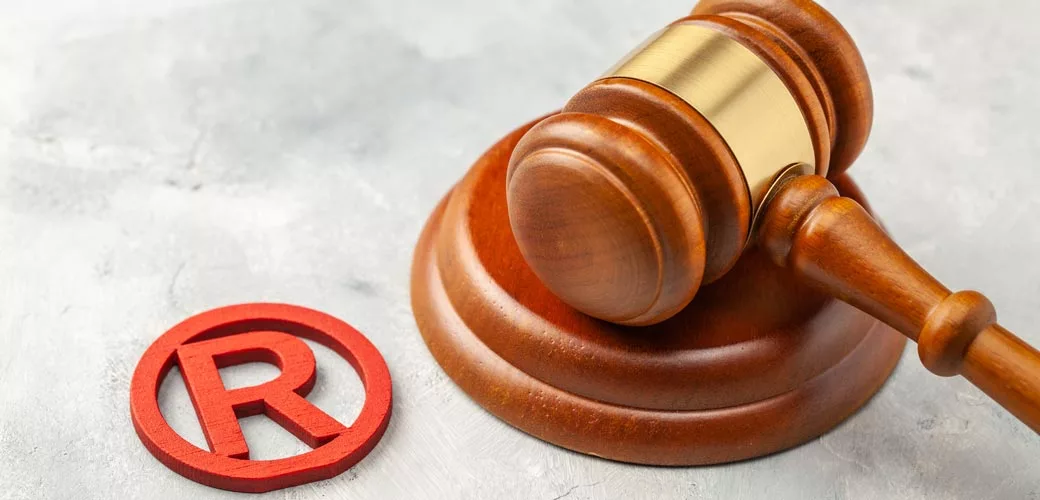In the realm of intellectual property, navigating the complexities of legal disputes requires a nuanced perspective and a well-thought-out plan. Organizations often face challenges when protecting their unique identifiers and ensuring their market presence remains unshaken. The art of addressing these conflicts lies in a combination of preparation, insight, and a keen understanding of the legal landscape.
Successful navigation of these confrontations demands not only awareness of the applicable laws but also adaptability to the evolving circumstances surrounding each case. A thoughtful and proactive approach can significantly influence the trajectory of the resolution process. By concentrating on the intricacies involved, entities can bolster their chances of achieving favorable results amidst potential hurdles.
Moreover, the importance of collaboration with legal experts and industry stakeholders cannot be overstated. Building robust alliances and gathering comprehensive intelligence about past encounters can illuminate the path forward. When organizations commit to meticulous planning and informed decision-making, they set the stage for effective resolution of disputes, safeguarding their interests while promoting innovation and growth.
Key Types of Trademark Disputes
In the realm of intellectual property, conflicts can emerge over various aspects of brand identification and protection. These disagreements often stem from the use, recognition, and potential confusion surrounding marks that serve to distinguish goods and services. Understanding the common categories of these conflicts is essential for anyone involved in the creation or management of a brand.
Infringement arises when one party uses a mark that is identical or deceptively similar to a registered mark owned by another, leading to potential consumer confusion. This is one of the most prevalent forms of conflict, often prompting legal actions to protect one’s brand identity and market presence.
Dilution occurs when the distinctiveness or reputation of a famous mark is weakened by another’s use of a similar mark, even if there is no direct competition. This type of dispute highlights the importance of safeguarding a brand’s reputation beyond mere market confusion.
Cancellation refers to the legal process through which a party seeks to eliminate a registered mark from the official registry. This can be initiated if the mark is deemed to have been improperly registered, often due to issues like non-use or descriptiveness.
Opposition is a preventive measure wherein an entity challenges the registration of a mark during the application process. This form of conflict allows parties to protect their rights before a potentially harmful mark is officially recognized.
False Advertising claims may arise when a brand misrepresents its products in a manner that confuses consumers about the origin or quality, thereby infringing on another party’s rights and causing market disruption.
Each of these types of disputes necessitates a thorough approach to resolution, balancing the interests of brand owners with consumer protection and market fairness. Effective navigation through these conflicts requires a deep understanding of the underlying legal frameworks and the implications of each type of dispute.
Essential Elements of a Trademark Case
In the realm of intellectual property, certain fundamental aspects must be established to build a robust legal position. These components provide the foundation for asserting rights and challenging potential infringements. Navigating these elements is crucial for crafting a compelling argument in legal proceedings.
Key Components of Protection
To effectively shield a mark, it must be distinctive and used in commerce. This distinctiveness determines the protection level and is typically classified into categories ranging from generic to arbitrary. A strong affiliation between the mark and the goods or services it represents is vital, as it reinforces consumer recognition.
Proving Infringement
Demonstrating unlawful use requires establishing a likelihood of confusion among consumers. Factors considered include the similarity between marks, the nature of the products or services, and the channels of trade. Adequate evidence, including consumer feedback or market studies, plays an instrumental role in substantiating claims.
In conclusion, a thorough grasp of these essential elements is integral to forming a successful case in the competitive landscape of intellectual property protection.
Development of Litigation Strategies
Creating effective approaches in legal confrontations requires careful planning and a thorough understanding of the intricacies involved. Crafting a solid framework for addressing potential disputes can significantly enhance the likelihood of a favorable resolution. It entails identifying key goals, assessing risks, and formulating a plan tailored to the specific needs of a case.
Assessment of Key Factors
At the outset, evaluating the relevant elements is crucial. This includes analyzing the strengths and weaknesses of both one’s own position and that of the opponent. A comprehensive review of available evidence, stakeholder interests, and the potential impact on the brand is essential. By thoroughly examining these factors, one can devise a more focused and effective approach.
Implementation of Proactive Measures
Once a foundational understanding has been established, proactive steps should be taken to bolster one’s position. This may involve engaging in preemptive negotiations, seeking alternative resolutions, or preparing for potential courtroom proceedings. Anticipating possible counteractions from the opposition and adjusting the plan accordingly plays a vital role in navigating the legal landscape successfully.
Common Defenses in Trademark Actions
In legal disputes involving brand identifiers, certain counterarguments are frequently employed to contest claims. These defenses serve as essential tools for defendants looking to protect their interests against assertions made by trademark holders. Understanding these common tactics can greatly inform the approach taken during such conflicts.
- Fair Use: This defense allows for the use of a protected mark in a descriptive manner, typically for comparative purposes or non-commercial endeavors.
- Abandonment: A party may argue that the complainant has ceased using the mark in commerce, thereby forfeiting their rights to it.
- Genericity: If a term has become a common name for particular goods or services, it may no longer be eligible for protection.
- Laches: This principle asserts that a delay in enforcing rights can bar a claimant from succeeding in their case due to potential unfairness to the defendant.
- Prior Use: A defendant may claim to have used the mark before the complainant, which can establish a superior right to continue that usage.
Employing these defenses can significantly influence the direction and outcome of a trademark case. Familiarity with these arguments is crucial for anyone involved in brand-related disagreements.
Case Studies of Successful Outcomes
This section presents notable examples that highlight effective tactics and results achieved in legal disputes over brand identification. Each case illustrates different approaches and the impact of meticulous planning and execution.
- Case Study 1: Famous Beverage Dispute
A leading beverage company faced challenges from a smaller competitor claiming similarity in branding. By gathering comprehensive market research and demonstrating consumer confusion, the established firm secured a favorable ruling. - Case Study 2: Fashion Industry Success
A renowned fashion label successfully enforced its rights against a fast-fashion retailer. Through diligent documentation and expert testimonies on brand recognition, the luxury brand not only won the case but also set a precedent for protection in the industry. - Case Study 3: Tech Innovations
A technology startup defended its innovative logo against a larger corporation. With a robust defense centered on unique market entrants and distinct consumer perception, the startup emerged victorious, securing its place in the competitive tech sector. - Case Study 4: Culinary Art and Identity
A famous chef battled against a restaurant chain that attempted to mimic her signature branding. By leveraging social media evidence and a strong narrative of brand story and consumer loyalty, she achieved a ruling in her favor, further establishing her brand’s reputation.
These examples illustrate the importance of preparation, evidence, and narrative in achieving favorable results in branding disputes. They serve as valuable lessons for others navigating similar situations in the marketplace.
Q&A: Trademark litigation
What are the key factors to consider before initiating trademark litigation?
Before initiating trademark litigation, several key factors should be considered to ensure a successful outcome. Firstly, the strength of your trademark is crucial; robust trademarks have higher success rates in litigation. Secondly, assess the likelihood of confusion between your mark and the defendant’s mark, as this is a primary consideration in trademark cases. Thirdly, understand the financial implications—including potential legal fees and the cost of a prolonged litigation process. Additionally, evaluate the potential impact on your brand reputation and business relationships. Lastly, consider alternative dispute resolution methods, like mediation or arbitration, which can be more cost-effective and quicker than traditional litigation.
How can I strengthen my trademark before engaging in litigation?
Strengthening your trademark before engaging in litigation involves several proactive steps. First, ensure that your trademark is registered with the relevant authorities, as this provides legal presumptions of validity and exclusive rights. Conduct comprehensive market surveys to gather evidence supporting the distinctiveness of your mark. Regularly monitor the marketplace for potential infringements to take timely action. Furthermore, document all use of your trademark, including advertising materials and sales data, to establish its recognition and reputation. Finally, engage in consistent branding efforts to reinforce consumer association with your trademark, creating a stronger case in potential litigation.
What should I expect during the trademark litigation process?
The trademark litigation process can be complex and typically involves several stages, which generally include filing a complaint, discovery, pre-trial motions, and possibly a trial. Initially, you will file a complaint outlining your claims and, subsequently, the defendant will respond. During the discovery phase, both parties exchange evidence, which can include documents, depositions, and expert testimony. Pre-trial motions may address various legal issues, such as motions to dismiss or motions for summary judgment. If the case proceeds to trial, both sides will present their arguments and evidence before a judge or jury, who will then render a verdict. It’s important to be patient, as litigation can be time-consuming and may take several months or even years to reach a conclusion.
What are common strategies for defending against trademark litigation?
Common strategies for defending against trademark litigation may vary depending on the specifics of the case, but include several key approaches. One effective strategy is to challenge the validity of the plaintiff’s trademark by demonstrating that it is generic, descriptive, or has not been used in commerce sufficiently to establish rights. Another common defense is to argue that there is no likelihood of confusion between the marks due to differences in appearance, sound, or marketing channels. Additionally, you might present evidence of prior use of the mark or argue that the plaintiff has abandoned their trademark rights through non-use. Finally, consider negotiating a settlement out of court, which can save time and resources for both parties.
What is trademark infringement, and how does it occur?
Trademark infringement occurs when an unauthorized party uses a trademark or service mark in a way that is likely to cause confusion among consumers about the source of the goods or services. This can include using a confusingly similar mark or trade dress that misleads the public.
How can a trademark owner protect their rights through federal trademark registration?
A trademark owner may protect their rights by obtaining federal trademark registration through the United States Patent and Trademark Office (USPTO). This provides the owner with the exclusive right to use the trademark in connection with the goods or services listed in the registration and allows them to file a lawsuit in federal court for trademark infringement.
What legal action can be taken if trademark infringement occurs?
If trademark infringement occurs, the trademark owner may file an infringement lawsuit in federal court under the Lanham Act. They may seek injunctive relief to stop the unauthorized use of the trademark, damages, and evidence of actual confusion caused by the infringing mark.
How do courts determine whether a mark is likely to cause confusion?
Courts evaluate whether there is a likelihood of confusion by considering factors such as the similarity between the allegedly infringing mark and the registered trademark, the relatedness of the goods or services offered, and evidence of actual confusion among consumers. The plaintiff must demonstrate that the use of the trademark is likely to cause confusion.
What role do litigation attorneys play in trademark infringement cases?
Experienced trademark litigation attorneys help trademark owners navigate intellectual property law, build infringement claims, and represent them in court. They provide legal advice, gather evidence of actual confusion, and work to resolve cases either through settlement or by pursuing a judgment in federal court.





